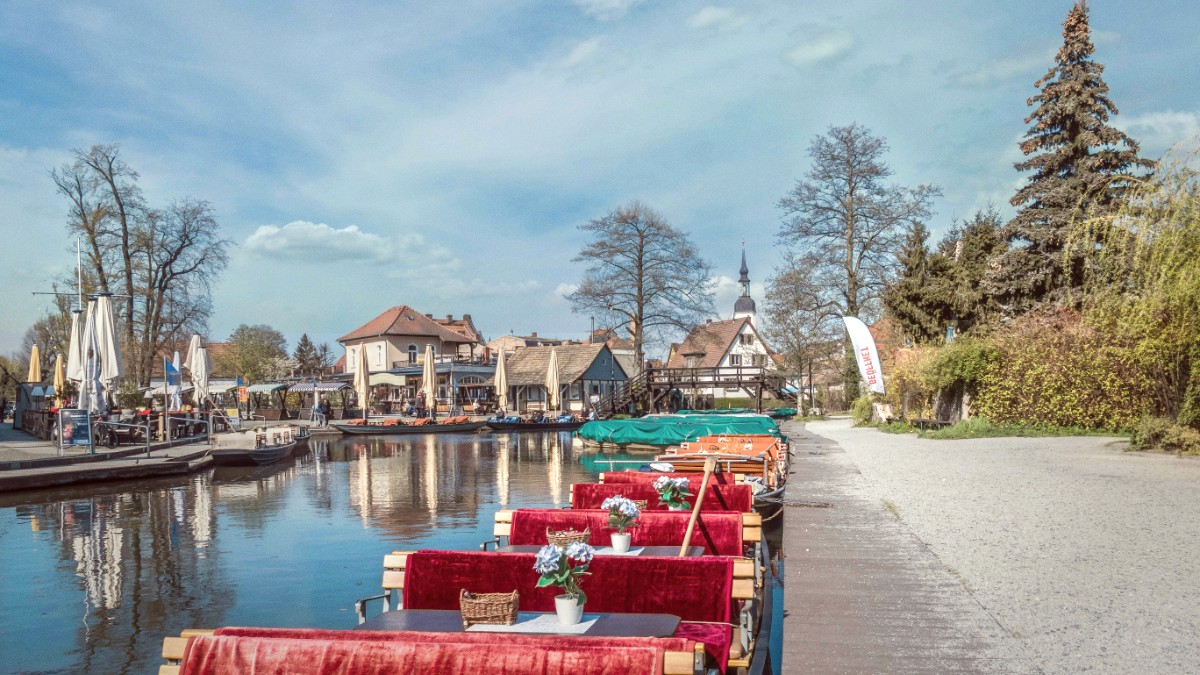
Germany
For centuries, Spreewald people lived off the land and water. The canal system supported fishing and transport. Hardier crops like potatoes and cucumbers were important. Preservation methods, especially pickling, were central.
Sorbian culinary traditions add to the flavor profile, often with dill, horseradish, and mustard. Flavors are generally savory and comforting.
While core cuisine is consistent, some villages or family guesthouses have specific recipes or local takes on classics.
Germans generally eat dinner earlier (6 PM-8 PM). Lunch is often the main meal. Tipping is customary (5-10% or rounding up). "Guten Appetit!" is common.
Breakfast (7 AM-10 AM) is light. Lunch (12 PM-2 PM) historically larger. Dinner (from 5 PM/6 PM) can be warm or a cold "Abendbrot".
The most iconic product, with protected geographical indication. Pickled in various ways: dill, horseradish, mustard.
Find them everywhere: pickle stands, local restaurants, supermarkets.
Delicious freshwater fish, often pan-fried with potatoes and vegetables. Eel is a distinct delicacy, often smoked or fried.
Common on menus at most traditional restaurants.
Hearty potato soup with local smoked sausages. Plinze are thin Sorbian pancakes, savory (with quark) or sweet (with applesauce).
Comforting dishes, available at many traditional eateries.
Autumn brings game dishes (venison, wild boar) and mushrooms. Spring features asparagus (April-May).
Pickle stands are the most prominent street food. Small Imbiss stands offer sausages or fries.
Limited in the Spreewald. Some higher-end hotels, in Burg or Lübbenau, offer refined regional cuisine with a modern touch.
Abundant in Lübbenau and Lübben, also in Burg. Traditional German and regional dishes in comfortable settings.
Imbiss stands offer quick and affordable bites. Bakeries are good for breakfast or quick lunch.
Weekly markets sometimes operate, offering fresh produce and local specialties. These are smaller community-focused markets.
Check local tourism calendars for market dates.
Dining at a waterside restaurant accessible by punt boat is a memorable combination of local cuisine and the unique Spreewald environment.
Many restaurants in Lübbenau and Burg have direct canal access.
Regional German and Sorbian cuisine are dominant.
Larger towns like Cottbus provide more international dining choices.
Many establishments use fresh, local ingredients.
Inform staff about allergies. "Glutenfrei" is generally understood. Cross-contamination can pose a risk in smaller kitchens.
Explain your needs clearly and politely.
Halal and kosher food options are very limited to non-existent. Self-catering or bringing your own food is advisable.
Plan ahead for specialized meals.
"Ich bin Vegetarier/Veganer" (I am vegetarian/vegan).
Clear communication is paramount for specific dietary needs.
Formal tourist cooking classes are not widely available. Some guesthouses or local centers might offer informal cooking experiences seasonally.
Visit local pickle factories like Spreewaldhof for tours and tastings. Some farms offer direct sales of produce.
Seasonal harvest festivals in autumn often feature local food, produce, and traditional dishes.
Visit a local pickle stand or factory. Sample the wide variety of Spreewald pickles.
Discover flavors beyond standard dill.
Seek restaurants advertising "Spreewälder Spezialitäten" (Spreewald Specialties) on their menus.
These places focus on authentic local dishes.
Tours offer insights into pickle production and sales. A fascinating look at the region's signature product.
Learn about pressing linseed oil and taste freshly pressed oil. Visit the one in Straupitz for an authentic experience.
Some villages, like Schlepzig, have historic breweries offering tours and tastings of local beer.
Spreewald cuisine focuses on fresh, local ingredients. Meals are generally savory and comforting, often with a hint of sourness from pickles and freshness from dill and parsley.